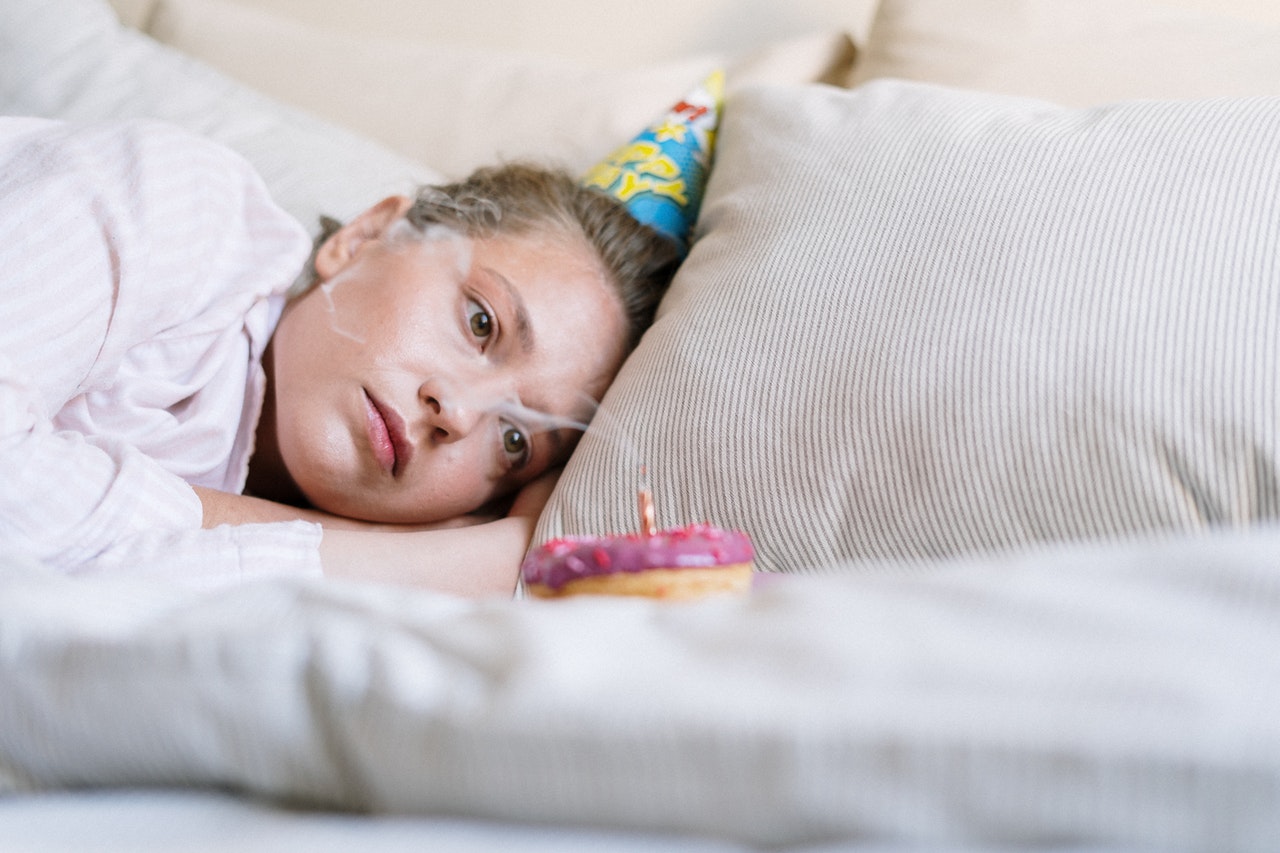

Make ADHD Your Superpower
This article aims to teach you how to utilize a practical framework to advocate for the support you need from coaches and other support providers;
Bipolar disorder is one of the most common mental illnesses in the United States. It is estimated that every year 5.7 million Americans are struggling with the disorder (about 2.6% of adults). Typically, individuals are diagnosed with Bipolar Disorder between the ages of 18-29, then 30-44, and finally, 45-59. Although more common in adults, children are just as susceptible. About 2.9% of adolescents suffer from Bipolar Disorder, but it is important to keep in mind this number is larger because there are fewer individuals in this age group. Men and women are affected at a similar rate (2.9% and 2.8%, respectively). However, women are more likely to experience more frequent mood changes than men. Even though Bipolar Disorder is quite common, it still requires treatment. These statistics may be alarming, but creating a larger sense of awareness surrounding the disorder is crucial. Having a strong support system is the best way to manage symptoms, so look to family and friends for help. Today, we will be exploring what Bipolar Disorder actually is and answer all of your questions surrounding the illness.
Definitions
Bipolar Disorder is a mental illness that can present differently in everyone who suffers from it. The most common feature is episodes of mania and depression. These episodes can vary in length and severity based on the type of disorder.
Bipolar I Disorder
Bipolar I is classified by having at least one manic episode in their lifetime, but it is not limited to just one. People typically are diagnosed with this type during their adolescence or early adulthood, but it could be as early childhood. This form is typically referred to as Pediatric Bipolar Disorder in children. Since it is harder for children to express their feelings, they do not typically understand what a manic episode is.
During a manic episode, individuals typically spend excessive amounts of money, act in narcissistic ways, or engage in promiscuous acts. These episodes of mania can last for a few weeks or months, and the severity always depends on the person. Most people who are suffering from Bipolar Disorder go through periods where they do not experience symptoms; however, if left untreated, these manic episodes can result in very severe consequences for the individual.
Bipolar II Disorder
Bipolar II Disorder is more difficult to diagnose. Many of its symptoms are characterized by depressive symptoms. It is common that people who have Bipolar II are incorrectly diagnosed with Major Depressive Disorder. Individuals can go years with an incorrect diagnosis, or never receive a proper one.
A proper diagnosis is crucial to receiving to the correct interventions and treatment methods. Bipolar II Disorder is different from MDD because of the experience of hypomania, a less intense form of mania. Although different from mania, it can still be quite disruptive for the individual. If left untreated, hypomania can trigger mania, which is why treatment is critical.
Risk Factors For Developing BD
The exact cause of Bipolar Disorder is still unknown. Researchers believe there is a genetic component; however, not everyone who is diagnosed has a family history of Bipolar Disorder. Environmental factors (alcohol consumption, substance abuse, gender, stress levels) can also greatly influence the development of the disorder.
Gender
Men and women are equally affected by the disorder, but some symptoms are more specific to one gender than the other. As mentioned, women are more likely to experience those rapid cycles of mood changes. Rapid cycling refers to changes in mood where an individual experiences four or more manic episodes within a 12-month period. A person’s emotions can move from high to low over a period of days or even hours. Rapid cycling is more common in people who are not being correctly treated for Bipolar Disorder. As well, they are more likely to experience mixed and depressive episodes. Men typically experience symptoms of anger, hostility, and aggression.
Family Tendencies
If there is someone in your immediate family who is diagnosed with Bipolar Disorder, you may be at a higher risk for developing it. Many people do not experience symptoms until they enter early adulthood. Although Bipolar Disorder can be diagnosed at any age, the median onset age is 25.
Alcohol or Substance Abuse
Although there is no research to show a direct link between alcohol and other substances, their continued usage can hasten the onset of symptoms and make mood episodes more severe. As always, consider alcohol and substance use in moderation.
Stress
People who are highly stressed may be more likely to be diagnosed with Bipolar Disorder. Other factors (such as physical, emotional, or sexual abuse) and traumas are believed to increase the risk of Bipolar Disorder later in life. Stress has negative effects on many parts of our lives, and this is no exception.
Phases
The phases associated with Bipolar Disorder are: mania, depression, and (sometimes) hypomania. They change with time and can last for days, weeks, months, depending on the person and the situation. We will go deeper into each of these phases in the next section.
Manic Phase
Bipolar Disorder is characterized by extremes. One of the most common symptoms of the disorder is experiencing manic episodes. Although it is such a common symptom, it is often misunderstood or incorrectly applied. So, what really is mania?
Mania is a state of feelings of extreme highs. In some cases, people may not feel much different than normal, especially when following a depressive episode. Mania might not feel dramatic, but what differentiates it is the degree to which the change in your mood affects you and your ability to function. Mania is not a temporary high of productivity, but is typically accompanied by sleeplessness, an inability to ‘turn off’, and exaggerated or aggressive speech patterns.
Mania in Bipolar Disorder is defined as a period of time in which mental activity is at its peak. This peak can involve hyperactivity, delusions, or hallucinations. It is not as simple as being sad one minute and happy the next, it has to do with your brain’s overall functioning.
Signs
People with Bipolar Disorder may have a difficult time recognizing symptoms. Mania and the less extreme hypomania are varying degrees of the same basic set of symptoms. These symptoms include:
Next Steps
If you find yourself experiencing symptoms of Bipolar Disorder it can feel very frightening. However, it is a highly treatable disorder, and most individuals can lead a stable, productive life. The key to success is proper treatment. Therapists are equipped to assess, diagnose, and treat Bipolar Disorder. If you or a loved one is experiencing symptoms of Bipolar Disorder, reach out for help.
Depressive Phase
The depressive phase is not all that different from a usual depressive episode. The symptoms are also quite the same, including:
For more information on depression, including self-help tips, check out our article here. However similar, Bipolar Disorder and Clinical Depression require treatment from a medical professional. If you or a loved one is experiencing symptoms of depression, please seek out help from a licensed specialist.
Treatment Options
Even though mood swings are a part of life, there is a very big difference between a typical mood swing and Bipolar Disorder. Many treatment methods are out there, and, if done correctly, they can help individuals lead healthier, easier lives.
An Accurate Diagnosis
The first step to recovery is receiving an accurate diagnosis. As mentioned, it is not always as easy as it should be to receive. Some symptoms are difficult to distinguish from other mental illnesses, so typically people are diagnosed with forms of depression. It can take several visits to get a correct diagnosis.
Even for experienced professionals, diagnosing Bipolar Disorder may be complicated. It is best to go to someone who specializes in Bipolar Disorder. Although there are currently no lab tests, your doctor will carry out several exams to ensure your symptoms are not caused by other illnesses or medications. After receiving a Bipolar Disorder diagnosis, you will begin your treatment journey.
Medications
One of the most effective treatment options of Bipolar Disorder is medication. These medications are used to control mania and depression, and help stabilize moods. The right drug and dosage can be difficult to achieve, so individuals work closely with their doctor and/or specialist to find the correct balance. The appropriate dosage will be determined after seeing what works best for you and your symptoms. Patience is key, even though it may be difficult.
There are risks involved with Bipolar Disorder drugs, but taking the correct combination consistently and with other forms of treatment is very effective. A patient has to keep track of their symptoms and consult their doctor when things change. Mixing these medications with certain foods and drinks can cause many problems.
Psychotherapy
Talking about your experiences with Bipolar Disorder can help you manage the feelings, behaviors, and thoughts that come with the disorder. Psychotherapy is a great way to help people with a variety of mental illnesses control their symptoms. We have a variety of articles on Mental Treat that explain more about psychotherapy practices and benefits.
Working with a therapist helps you open up, learn coping mechanisms, and navigate uncomfortable feelings. Cognitive-Behavioral Therapy has been quite helpful in managing symptoms due to the effects of negative thinking patterns. CBT changes these habits into more positive ways of responding by analyzing your thoughts and focusing on how they affect your emotions. Whatever method of talk therapy works for you will also depend on your relationship with your therapist.
Mental Treat has a variety of articles on how to choose the right type of therapy and right therapist for you. Our platform allows you to filter to find a therapist who fits your needs. Check it out!
Lifestyle Changes
Many daily activities can trigger symptoms of Bipolar Disorder. Increased stress, a lack of sleep, and consumption of alcohol can all be triggers. Maintaining a regular sleep scheduling is particularly important in keeping Bipolar Disorder symptoms as minimal as possible. Mental Treat has a great article on improving sleep you can find here. We also have one on reducing stress.
Self-awareness and self-management are crucial to coping with Bipolar Disorder. When you understand the symptoms, it can be easier to treat. If you find that one particular activity triggers the symptoms, you will be able to keep from doing that thing. Be sure you are paying attention to any subtle changes in your activity levels and mood.
Pay extra attention to your diet, the amount of exercise you get, and sleep. When you are actively making positive changes to your lifestyle, you are inadvertently improving your quality of life, including managing Bipolar Disorder symptoms. These are all very simple tasks that can make a world of difference.
A Word From Mental Treat
We hope this article was informative on what Bipolar Disorder actually is and what it means to suffer from it. If you are diagnosed with Bipolar Disorder, know you are not alone. This illness is common, and it is treatable. People are able to live very fruitful and successful lives in spite of the illness. The more we understand of the disorder, the less stigmatized it will be.


This article aims to teach you how to utilize a practical framework to advocate for the support you need from coaches and other support providers;


Do you know those happy couples on Instagram who seems like they have it all together? They have one thing in common: little to no sexual


Unfortunately, we often do not learn enough about what makes a relationship healthy. Even if we do, the lesson does not always stick when it comes


Online therapy, especially as a result of COVID-19, has become increasingly more popular. It is easy, you can do it from anywhere, and it eliminates the


Couples therapy is a great way to restore a relationship. If you and your partner are experiencing problems and looking to work through them, it could


As the holiday season approaches, not everyone is filled with cheer. Some people love the seasons and start decorating their houses as soon as possible. They